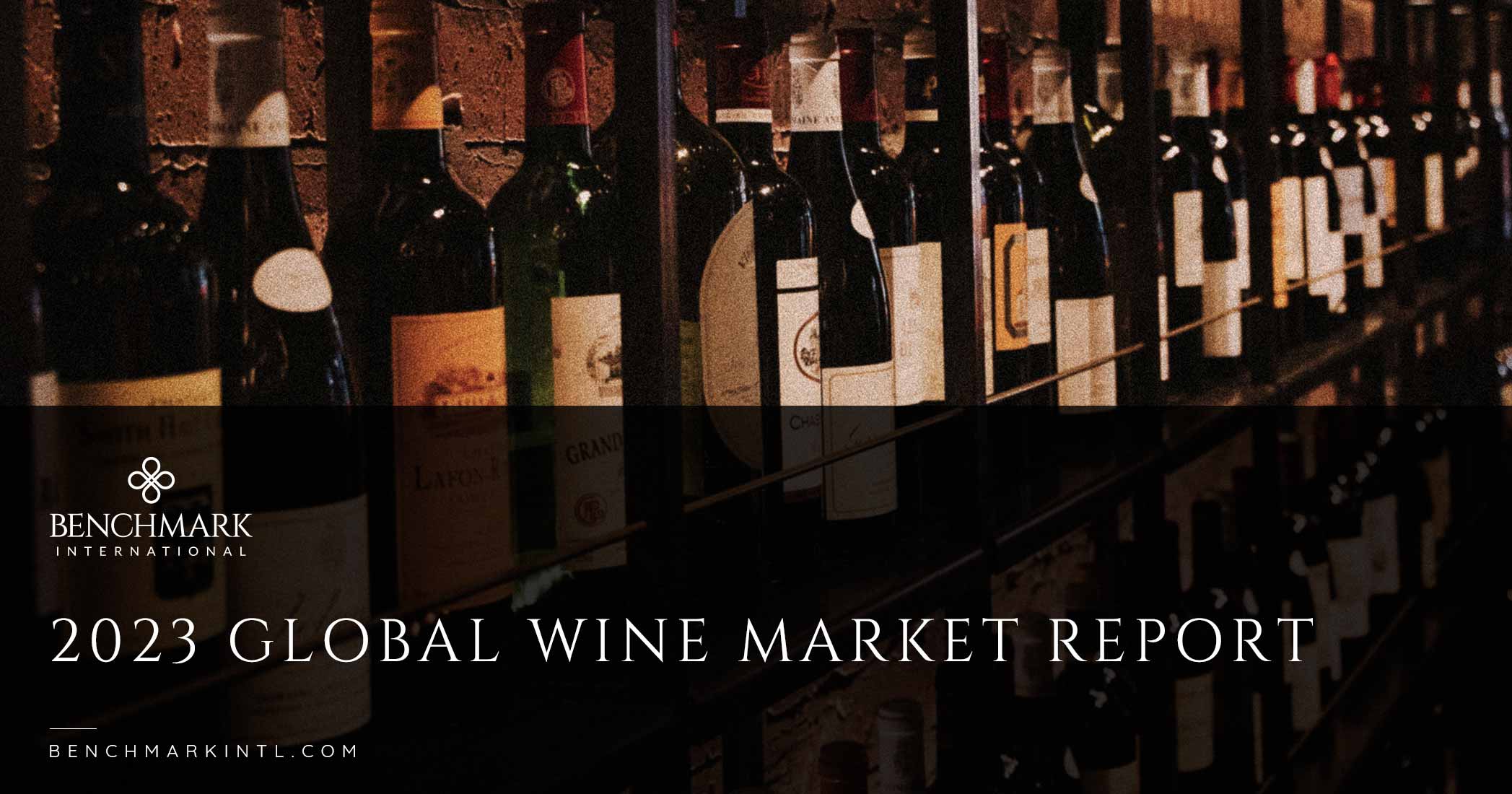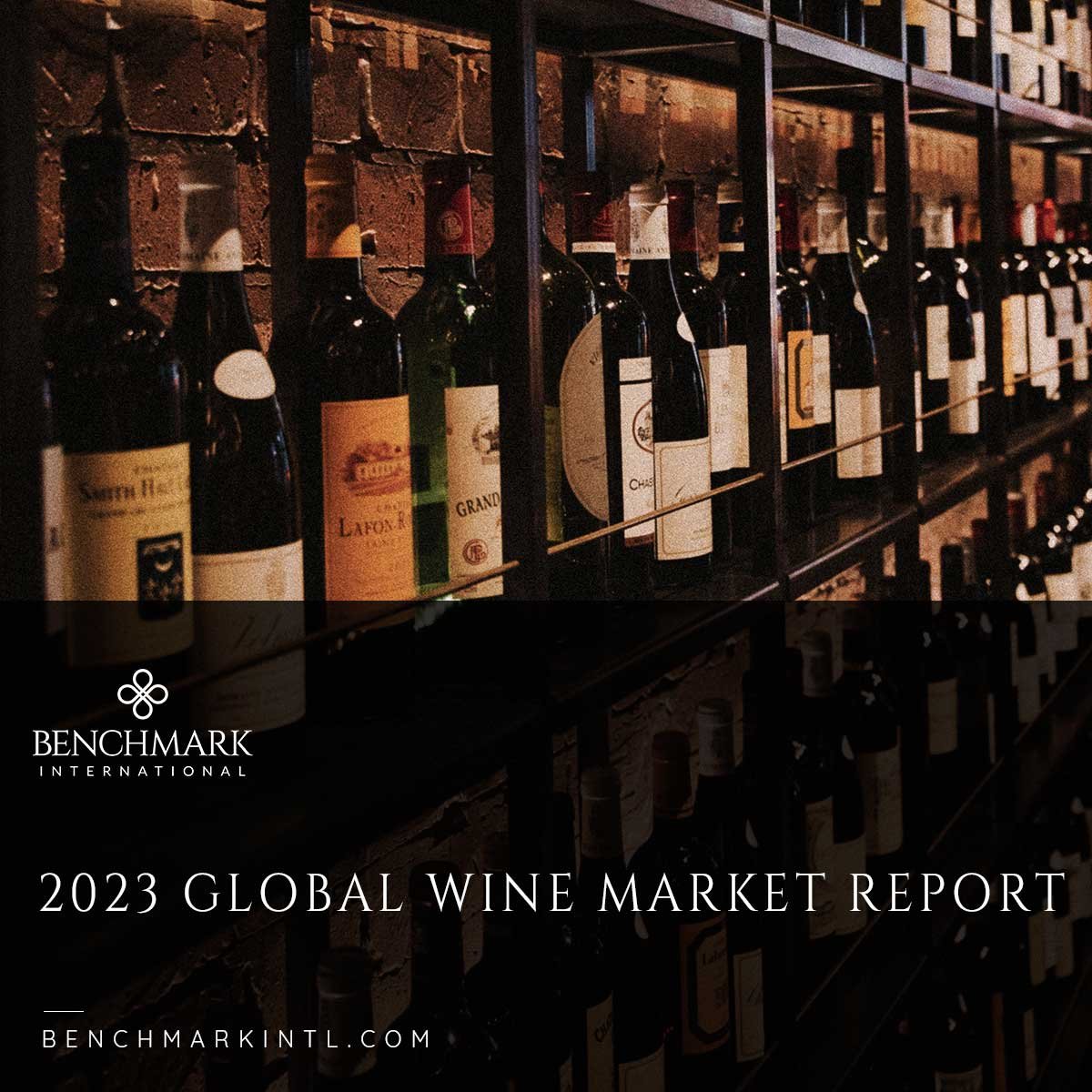
The global wine industry is enjoying a ripe comeback following a few challenging years due to restrictions from the COVID-19 pandemic. The strong comeback is expected to sustain into the future. In 2023, the global wine market is valued at $333 billion and is expected to grow annually at a compound annual growth rate (CAGR) of 5.2% between now and 2027. By 2027, a little over half of all spending, and 26% of volume consumption, will be for out-of-home consumption (e.g., in bars and restaurants).
Market Segmentation
The wine market is segmented into the following categories:
• Still wine: No addition of carbon dioxide (e.g., cabernet sauvignon, chardonnay, merlot, pinot noir, malbec, chianti).
• Sparkling Wine: Adding carbon dioxide (e.g., champagne, Lambrusco, bruschetta).
• Fortified Wine: Strengthened with added alcohol (e.g., sherry, Madeira, Moscatel, marsala) or even cannabis.
By Region
Wine consumption is highly concentrated in specific areas. Europe and North America are the two largest wine-consuming regions in the world. However, other sites are seeing more wine consumption and forecasts to emerge as more significant wine markets.
Europe remains one of the largest wine-producing regions globally due to its complex history of winemaking traditions. In addition, the continent is home to some of the most renowned and esteemed wine-producing countries, including Italy, France, Spain, and Portugal.
North America is also a central wine-producing region. The United States is one of the largest wine-producing countries in the world, with the most acclaimed regions being the Napa and Sonoma regions of California. Canada and Mexico are also critical wine-producing countries in the area. The most revenue for the global wine market is generated in the United States.
Oceania includes Australia and New Zealand. It has for quite some time been known as a significant, high-quality wine-producing region and innovative winemaking techniques. South America has been a quickly growing wine-producing region. Argentina and Chile have produced high-quality wines that continue garnering global recognition and a growing consumer base.
Asia is an emerging wine market, as consumers in countries like China and India have enjoyed more wine in recent years. China is one of the world’s top three countries for wine imports. The market expects to multiply as COVID-19 restrictions ease in Mainland China, and consumers become increasingly knowledgeable about wine. The market there intends to grow by 6.76% annually between 2022 and 2025. One recent survey by HKTDC Research reported that more than 40% of respondents drink wine at least once weekly. There is also more wine consumption and production from South Korea, Japan, and Thailand.
Trends for 2023
Sustainable & Organic Wines
As global concerns about sustainability continue to grow, so has consumer demand for organic, sustainable, and biodynamic wines. A survey by International Wines and Spirits Record reported that half of U.S. alcohol drinkers’ purchase behavior is influenced by a company’s sustainability and environmental initiatives. As a result, vegan wines are also a key emerging market for winemakers.
Convenient Packaging
Consumer behaviors have been shifting when it comes to purchasing wine. More people are looking for convenience and preference and want to taste the wine before purchasing full-sized bottles. As a result, winemakers are increasingly producing wine in cans, boxes, and smaller bottles to meet this relatively new and growing demand.
New World Wines
New world wines are typically targeted at wine novices because they are usually labeled in English, focusing on their main grape varietal, allowing newer wine drinkers to identify what they like more readily. They are also usually less expensive. These wines are generally produced in countries such as the U.S., Australia, New Zealand, and South Africa.
E-commerce
The COVID-19 pandemic transformed nearly every industry, and the wine market is no different. Traditionally, wine sales have mostly been offline. Consumers were more inclined to attend wine tastings and try products in person with the assistance of a knowledgeable sales representative. But after the pandemic, consumer habits have shifted thanks to rapid global digitalization, causing winemakers and distributors to move their sales channels online. Many wine retailers could not sell wine in person during COVID lockdowns, so consumers sought online ways to purchase. Many consumers continue to use these services even as the pandemic restrictions have subsided. Statista shows that the U.S. e-commerce share of wine sales soared from 0.3% in 2018 to 3% in 2022, generating more than a billion in net sales in recent years.
Technology & Social Media
The wine industry is increasingly seeking innovation to drive growth and improve efficiency. For example, new precision viticulture techniques, such as drone imaging, are being used to help winemakers grow higher-quality grapes and improve their wine yields.
Online platforms are also gaining popularity with winemakers, with more budgets dedicated to developing online technologies. These areas include augmented reality (AR) apps that enable the creation of an online presence through engaging social media content to draw consumers into a more immersive brand experience.
Red Wine Remains King
Red wine expects to continue to dominate the global wine market. The segment grew at a CAGR of 7.7% between 2022 and 2032. More consumers are understanding and drawn to red wine's various health benefits, such as high antioxidants, low blood sugar levels, low calories, and anti-inflammatory effects. As a result, red wine is also considered the most aromatic wine on the market.
Overall, the wine industry continually evolves, and new trends will continue to shape the market. Winemakers must keep up with these dynamics to succeed in a competitive market.
Market Challenges
Competition remains a significant challenge in the wine market because many players compete for market share. This makes it harder for smaller brands to gain a foothold in the market and stay competitive with well-known and legacy brands.
Consumer preferences constantly change in the wine business, and keeping up with the changes can be challenging. It can be difficult and expensive to produce new wines because it takes time to grow the vines and establish a quality vineyard in well-developed soil. Once you get a new wine grown, harvested, barreled, and bottled, consumers’ interests may have already moved on.
Climate change has a significant impact on winemakers. Fluctuating temperatures and rainfall patterns affect grape production and the actual quality of the wine. Weather changes and storms, including disasters, wildfires, flooding, and unusual temperature extremes, can result in crop losses and make it more challenging to maintain quality. This can also lead to supply chain disruptions due to transportation delays, resulting in shortages and higher consumer prices.
Inflation also challenges the wine industry as consumers seek ways to reduce spending. As a result, more people are looking toward cheaper alcoholic options, and fewer are willing to splurge on what may seem like a pricier bottle of wine.
M&A Activity
Last year, wine M&A activity became more normal following a busy year in 2021, as the pandemic forced more large company transactions than average. Most M&A activities occurred among Napa Valley, California, wineries, and distributors. Transaction volume in 2023 is expected to remain steady, albeit slightly slower than the previous two years. Premium brands with solid cash flow and assets wish to still participate in transactions. In addition, portfolios at higher-priced tiers continue seeking top vineyards to secure long-term growth.
Buyers may be more hesitant because of rising interest rates, continued inflation, higher cost of capital impacting valuations, and extended due diligence periods. Premium vineyards in specific locations, however, remain in buyers’ sights.
There are also many ongoing generational shifts in family-owned vineyards, especially in the U.S. This presents many opportunities for M&A activity as generational pressures can be complex, and there are questions regarding exit and succession strategies.
New entrants in the sector can benefit from understanding how to adjust to changing circumstances and adapt to challenges and will enjoy significant opportunities for creating value in the winemaking market.
Americas: Sam Smoot at +1 (813) 898 2350 / Smoot@BenchmarkIntl.com
Europe: Michael Lawrie at +44 (0) 161 359 4400 / Lawrie@BenchmarkIntl.com
Africa: Anthony McCardle at +27 21 300 2055 / McCardle@BenchmarkIntl.com
ABOUT BENCHMARK INTERNATIONAL:
Benchmark International is a global M&A firm that provides business owners with creative, value-maximizing solutions for growing and exiting their businesses. Benchmark International has handled over $10 billion in transaction value across various industries from offices across the world. With decades of M&A experience, Benchmark International’s transaction teams have assisted business owners with achieving their objectives and ensuring the continued growth of their businesses. The firm has also been named the Investment Banking Firm of the Year by The M&A Advisor and the Global M&A Network as well as the #1 Sell-side Exclusive M&A Advisor in the World by Pitchbook’s Global League Tables.
Website: http://www.benchmarkintl.com
Blog: http://blog.benchmarkcorporate.com

 Benchmark International
Benchmark International  Benchmark International
Benchmark International 





